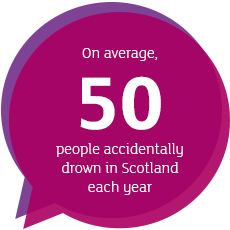The Management of Water Safety in Scotland's Local Authorities Workshop
On average, 50 people accidentally drown in Scotland each year and a further 29 people take their own lives around Scotland’s waters.
In January 2018, Water Safety Scotland released Scotland’s Drowning Prevention Strategy which has a key objective to “develop water safety across Scotland’s 32 local authority areas and promote the development of water safety policies”. Within this, there are two key activities:
- Encourage all local authorities to develop a water safety policy
- Support local authorities in the development of a water safety policy
In 2018, RoSPA released “Local Authority Approaches to Managing Water Safety – Scotland Five Years on”. This was a five-year follow-on study from the original research, which took place in Scotland in 2013. Overall, as in 2013, a mixed picture was found - several local authorities were addressing water safety but there was still very little consistency or uniformity.
In response to this research and to implement the strategy in Scotland, RoSPA and RNLI have held three workshops with the aim to help local authorities understand water safety policy, the barriers to implementing a policy and to share key information and advice. The first was held on April 9, 2019 and the second was held on January 15, 2021. The most recent water safety policy workshop was held on November 8, 2022.
The workshops were held at RNLI Headquarters, Perth.
Documentation
November 8, 2022
January 15, 2021
April 9, 2019





